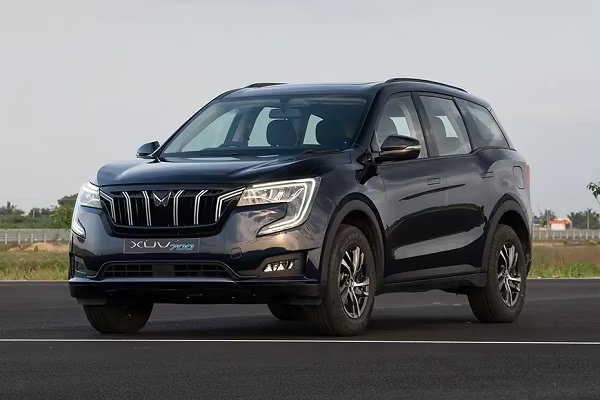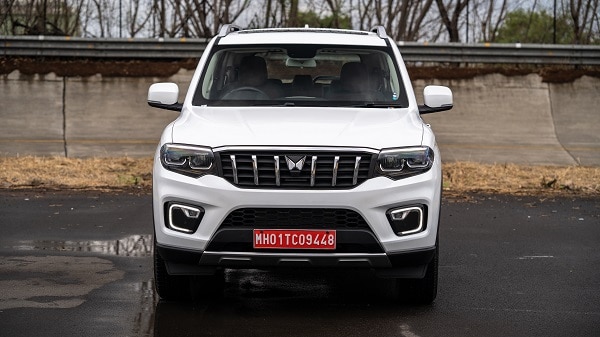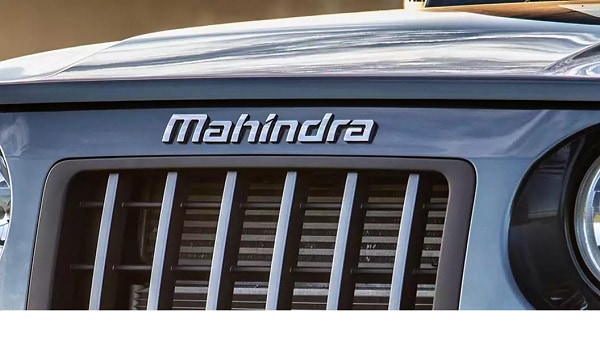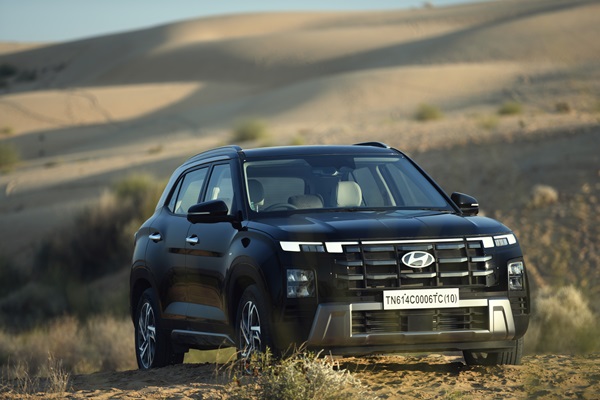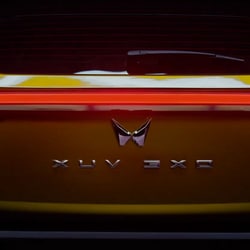How it's made: Building Tata's tough Harrier & Safari by an all-women workforce


Tata Motors recently invited us to its new assembly line at the Pimpri-Chinchwad plant in Maharashtra. The new Omega Factory produces the Harrier and Safari SUVs based on the “Omegarc" platform. While the new assembly line is state-of-the-art, what makes it different is the crew making these “tough" SUVs. This car assembly line has the largest all-women workforce in India and has been rolling out the Tata Harrier and Safari for the past year.
At first glance, it may seem nothing out of the ordinary to have women working in a manufacturing facility. But women hardly make up for a quarter of the labour force in industries. As per an Oxfam India report, the Labour Force Participation Rate (LFPR) of women in the country was just 25 per cent in 2021. Dig deeper and you will understand that gender parity is a part of the business. But women are now slowly and surely entering the labour force and that means there’s plenty that needs to change. Tata Motors is aiming to make a difference and the new initiative would be a great starting point. We had a chance to take a closer look at the manufacturing process and speak to the women at the Omega Factory.
Also check these Cars
Also Read : Tata records highest-ever annual sales in FY2023 led by Nexon, Punch, Harrier
Hands-on Training
The all-women crew joined Tata Motors in 2021. Women passed out from ITIs are hired temporarily, while skilled professionals (DAT) with 1-2 years of experience are hired for semi-skilled operations. Those with NTTF (pursuing Diploma) are hired for 2-3 years. They were first coached on the Jaguar-Land Rover assembly line as part of the training program in May 2021. The women were then moved to the TCF-1 assembly line by August (that now produces the Altroz and Punch) for a more hands-on experience. Operations at the newly-built TCF-2 began in December 2021, while the first SUV rolled out in February 2022. A year later, Tata says the women have been trained enough to work with any automaker as the company’s training program has honed them to work on different products, functions and assembly lines.
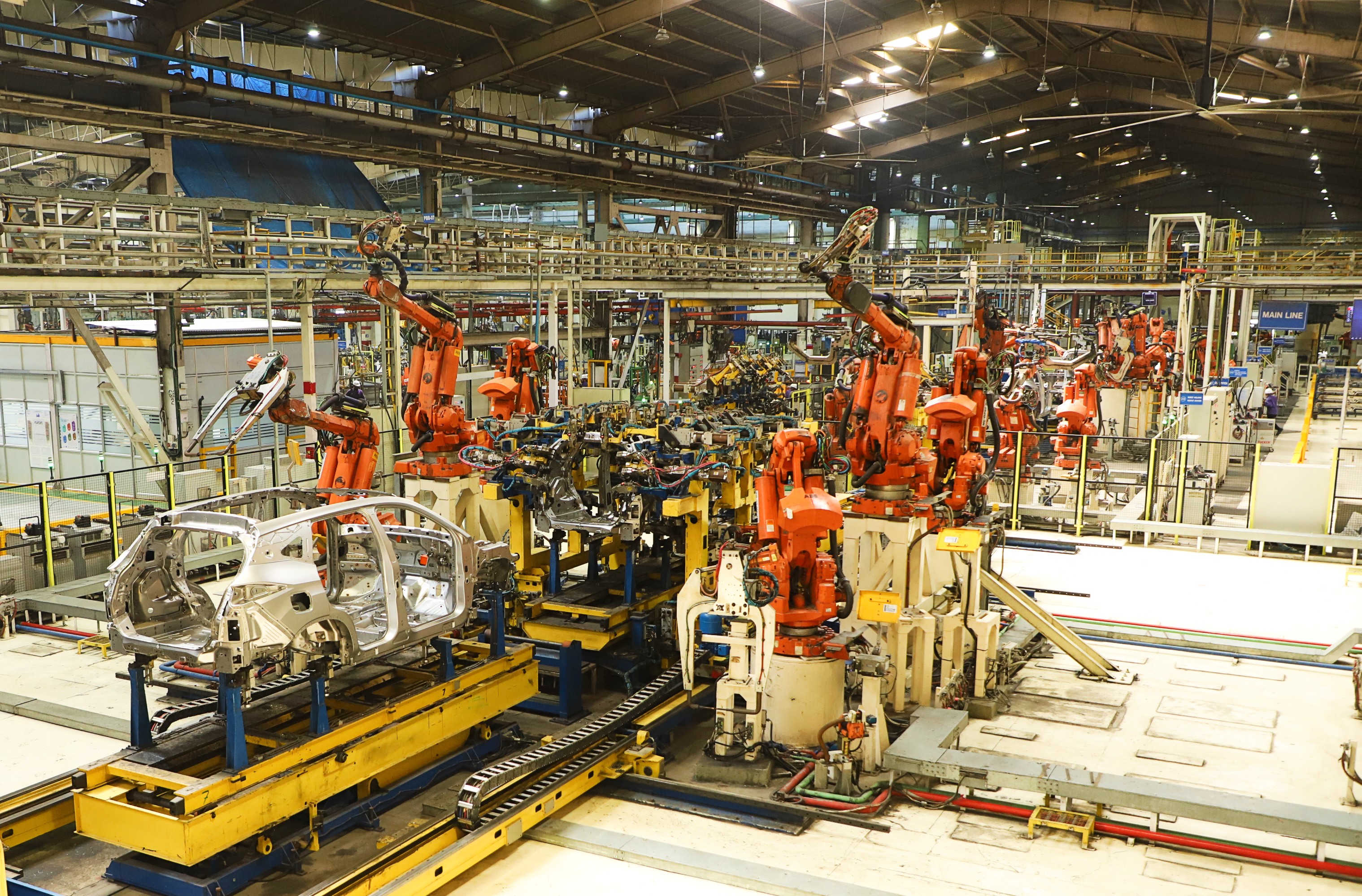

Building the Harrier and Safari
The process though begins at the welding shop, which is where the bodyshell for the Tata Harrier and Safari are put together. There are about 140 body panels welded across 93 workstations. The welding shop employs about 150 robots and 210 workers over two shifts with the option to add a third shift based on demand. The welding process is about 90 per cent robotic with over 4,760 welding spots on the Safari and Harrier. Barring the roof, nearly all other components are robotically welded on the SUVs. Once the frame is ready, it now moves to the paint shop wherein it is first galvanised for anti-corrosion treatment and then moved to TCF-2 where all components of the SUVs come together.
Also Read : Tata Motors updates its passenger vehicle range to follow latest emission norms


Knowing TCF-2
Tata Motors’ Pimpri facility is one of the oldest plants for the automaker that has built everything from the Indica to the new Safari. The Omega Factory is internally known as the TCF-2 (Trim-Chassis-Fitment 2), where the Harrier and Safari are put together on the same assembly line. The Omega factory now stands where the Indica and Indigo were once made until 2018. A new two-level structure now occupies the same space. Fun fact, this is India’s first car assembly line to be divided into two levels.
A little over a year old now, TCF-2 has some impressive statistics to its name. The 7,500 sq. mt. facility can operate in up to three shifts that employ 500 women each. That’s 1,500 women working round the clock to build the Harrier and Safari. At present, Tata is operating two shifts a day that can collectively produce about 200-220 cars. It takes about 170 minutes to produce one SUV from the start point to the end, says Mohan Savarkar, Vice President- Product Lines, Tata Motors Passenger Vehicles (TMPV).
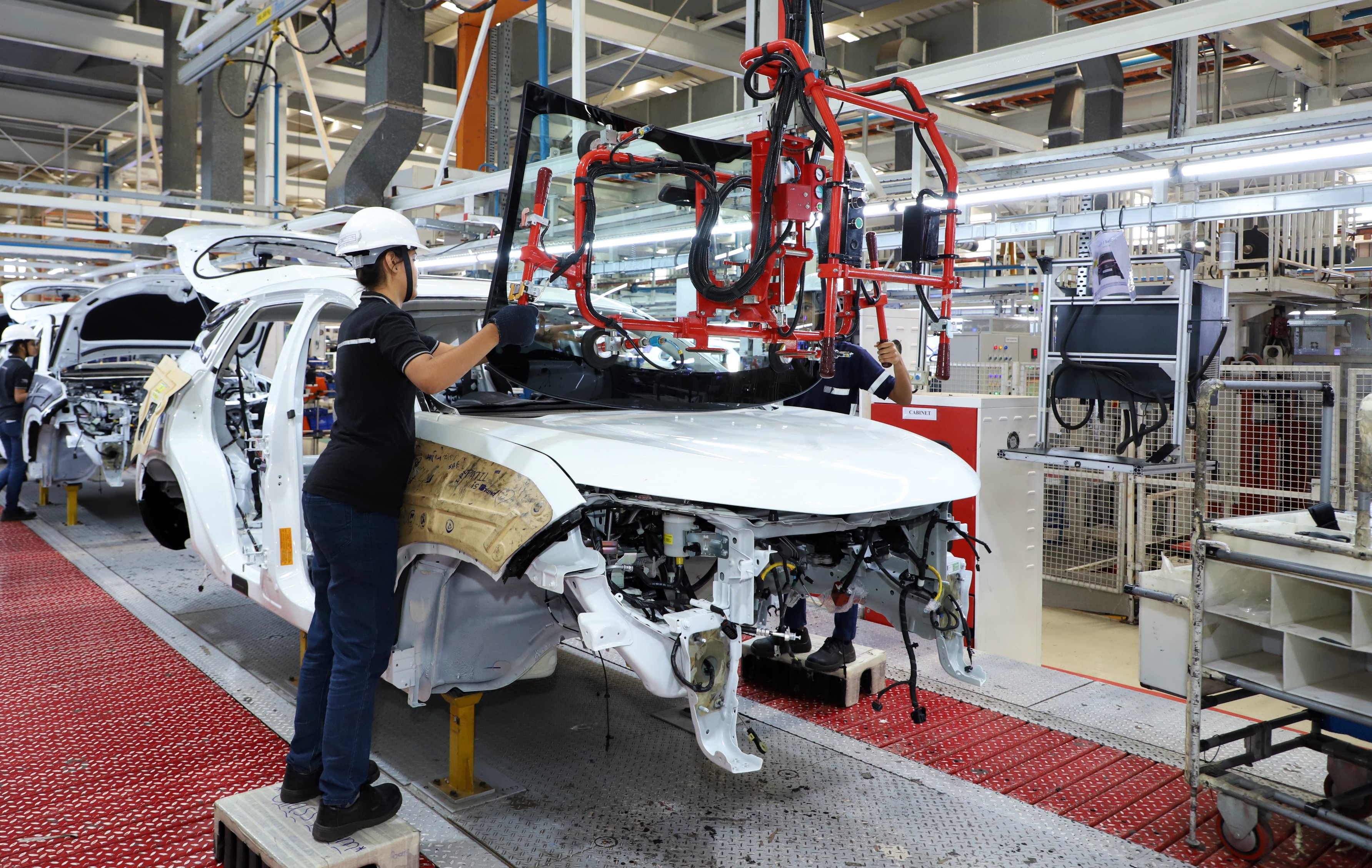

The assembly line has about 65 main workstations and 22 sub-assembly stations, which have been optimised to have women at the helm. Tata says the average height of a female employee is about 4.8 feet and so the automaker has installed platforms and ABS trolleys on critical workstations to make things ergonomically more accessible. There are also manipulators (assistance systems) for fitting the fuel tank, door removal and installing the glass, due to their heavy nature. Considering the female workforce has had limited exposure to electrical systems, the company has provided the same as part of the training program. Furthermore, the women employees use lighter tools as compared to the ones used by the male workers.
Also Read : Auto Expo 2023: Tata Harrier EV scheduled for launch in 2024
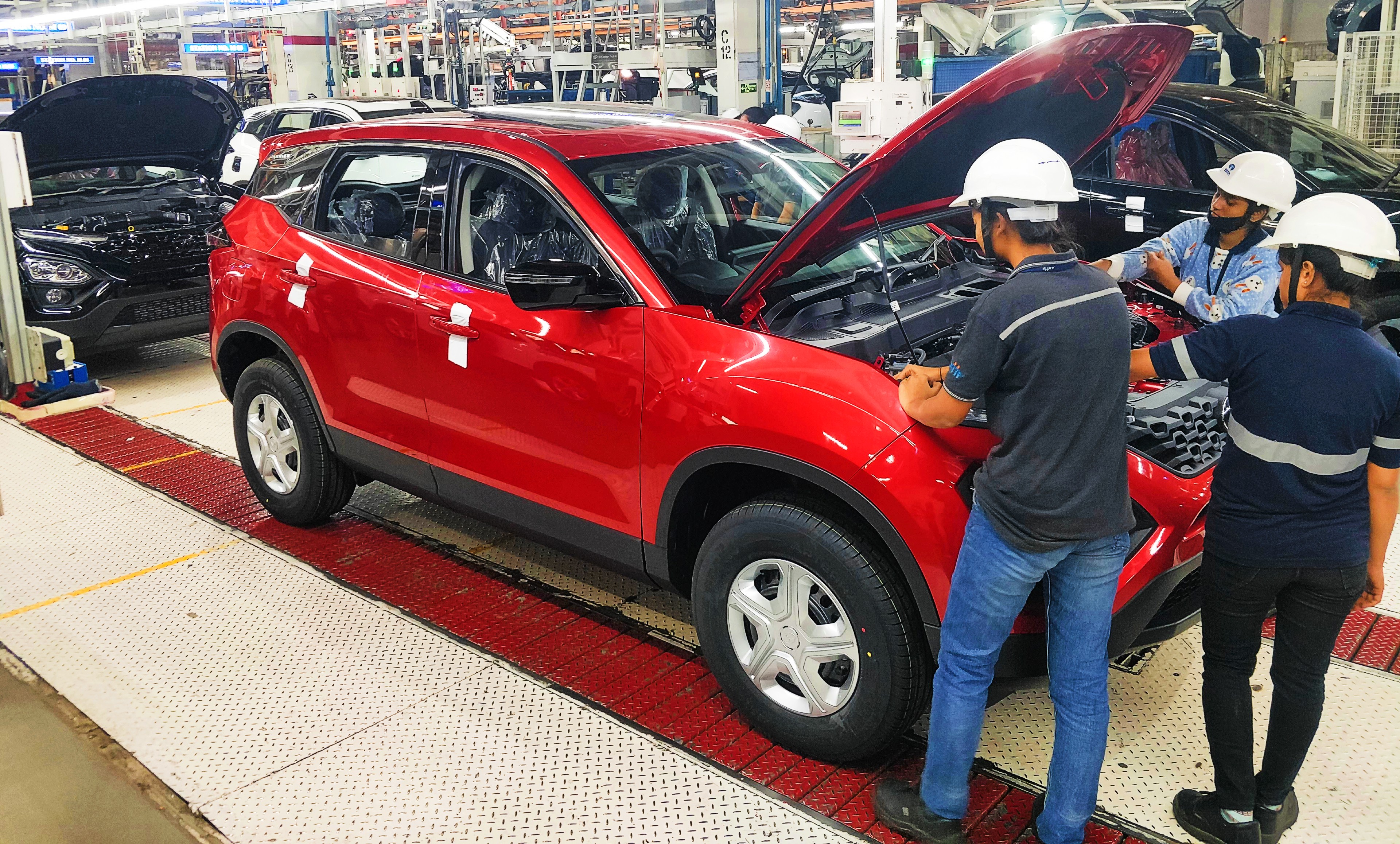

Ready for a skilled future
Tata Motors is preparing its female workforce for larger roles within and outside the organisation. Most women joined the workforce from the ITIs (Industrial Training Institute) or after completing the 12th class. Training programs range from three months to three years based on their qualifications. These women now have the option to apply for company-sponsored technical courses including a Diploma and B-Tech as part of the three-year Kaushaliya Learn and Earn program. The move not only benefits women who would want to grow their technical skills and climb the ladder but also ensures higher retention after the completion of training.
Most women on the shop floor are between the ages of 21-25 years. It’s not just education and financial constraints that they need to deal with but also family pressures, societal norms and more. Farheen Siddique, one of the senior managers leading this all-women workforce tells us that the challenge is to retain women employees after a couple of years, especially post-marriage. In that sense, these are still early years for TCF-2. But the company says it is working on their overall well-being with awareness of menstrual health and hygiene, nutrition, mental health, and even self-defence training.
Diversity is important for every organisation. As Tata lists out, it increases the talent pool, ensures lesser absenteeism and the attrition rate is said to be much lower when compared to men.
Also Read : 10 ADAS features introduced in 2023 Tata Safari, Harrier explained


Tata Motors isn’t the first automaker to have women in its workforce. MG Motor India and Bajaj Auto have been employing women to carry out critical tasks on the shop floor. But it certainly helps that the automaker is bringing processes in place to have more active participation. To give you perspective, the Tata Motors Passenger Vehicle plant employs about 12,000 workers, of which only about 2,000 are women. So the road is a long one when it comes to achieving gender neutrality but the wheel for change is set in motion.








 1956.0 cc
1956.0 cc Diesel
Diesel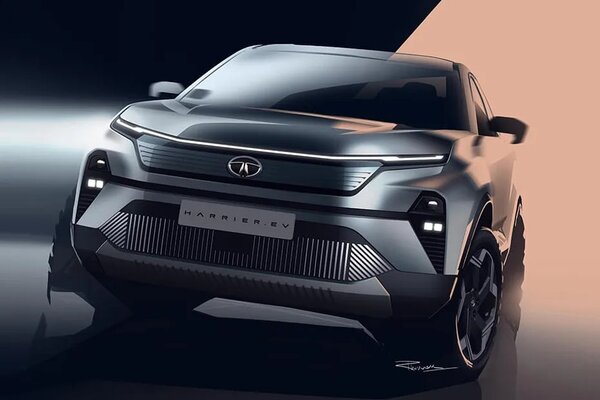
 50 kWh
50 kWh 400 Km
400 Km